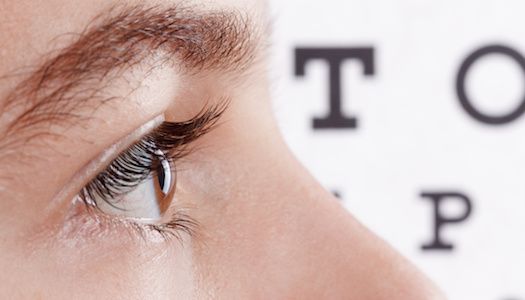Adalimumab Effective for Uveitis Associated with Juvenile Idiopathic Arthritis
When standard treatment failed, adding adalimumab achieved remission in 64%.

Juvenile idiopathic arthritis (JIA) is the most common chronic rheumatic disease in children and may include uveitis in as many as 30% of cases. However, JIA is a heterogeneous disease with seven subtypes. Depending on age, gender, and antinuclear-antibody (ANA) status, uveitis is more likely to develop in patients with some of these subtypes than in others. These subtypes are oligoarticular or extended oligoarticular JIA and enthesitis-related JIA.
For example, girls <7 years old with oligoarticular or extended oligoarticular JIA who are ANA positive are particularly prone to uveitis. Similarly, uveitis is especially common in boys >6 years old with enthesitis-related JIA.
Moreover, standard treatment with topical corticosteroids, cycloplegics, and disease-modifying drugs is often unable to control JIA-associated uveitis and prevent serious structural damage to the eye.
To prevent these vision-threatening structural changes, Dragana Lazarević, MD, and colleagues in the Department of Pediatric Rheumatology at Clinical Center Niš in Niš, Serbia, decided to prescribe adalimumab (Humira/AbbVie) as the first-line anti-tumor necrosis factor agent for all ANA-positive patients with oligoarticular or extended oligoarticular JIA and all patients with enthesitis-related JIA.
To determine the effects of this decision, the Serbian team retrospectively analyzed data from 11 such patients so treated at their center between April, 2010, and May, 2012.
Patients included three girls and eight boys. All of the girls and none of the boys tested positive for ANA.
The group included three patients with oligoarticular or extended oligoarticular JIA and eight patients with enthesitis-related JIA. The mean age for the group was 14.5 years (range, 9—18 yr), and the mean duration of uveitis before starting adalimumab treatment was 12.3 months.
All patients had uveitis that did not respond to standard treatment. None had received biologic treatment before adalimumab was started.
Patients with active ocular inflammation initially received topical corticosteroids and cycloplegics as well as methotrexate, 10—20 mg/m2/wk. If the response to this standard treatment was unsatisfactory, adalimumab, 24 mg/m2 every two weeks, was added.
After four months of adalimumab, systemic treatment was gradually tapered off and discontinued. However, after systemic treatment ceased, topical corticosteroid treatment was continued. After two years of follow-up, no uveitis relapses occurred, and visual acuity remained stable.
In addition, disease activity improved in all patients. Seven patients (64%) achieved a 100% American College of Rheumatology response rate, which is equivalent to complete remission. The other four patients (36%) achieved a 70% American College of Rheumatology response rate.
Based on these findings, the investigators concluded that the highly uveitis-prone JIA subtypes they studied may benefit from treatment with adalimumab as a first-line anti-tumor necrosis factor agent.
The study report, “Outcome of juvenile idiopathic arthritis associated uveitis in two disease subtypes,” was published online in January, 2017, in the Archives of Rheumatology.
Related Coverage:
Antibody Development an Obstacle in Treating Uveitis with Humira
Tocilizumab Effective for Uveitis in Juvenile Idiopathic Arthritis